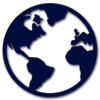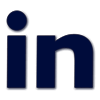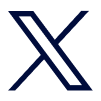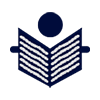
Only Regulatory Products (API/FDF), Drugs in Developments and News are Updated on this Virtual Booth
Update your Virtual Booth on PharmaCompass, ask us ![]()
About
CPhI North America CPhI North America
Not Confirmed
Not Confirmed
20-22 May, 2025
Not Confirmed
Not Confirmed
22-25 April, 2025
AACR Annual meetingAACR Annual meeting
Not Confirmed
Not Confirmed
25-30 April, 2025
List your booth number for exhibitions, ask us
CONTACT DETAILS






Upload your Marketing & Sales content on your company Virtual Booth, click HERE.
Events
Webinars & Exhibitions
CPhI North America CPhI North America
Industry Trade Show
Not Confirmed
20-22 May, 2025
Industry Trade Show
Not Confirmed
22-25 April, 2025
AACR Annual meetingAACR Annual meeting
Industry Trade Show
Not Confirmed
25-30 April, 2025
Digital content

INTERVIEW #SpeakPharma
[Sponsored by another company]https://www.pharmacompass.com/speak-pharma/our-unmatched-efficiency-and-track-record-of-faster-dmf-filings-give-our-customers-a-critical-competitive-advantage
VLOG #PharmaReel
[Sponsored by another company]DATA COMPILATION #PharmaFlow
[Sponsored by another company]https://www.pharmacompass.com/radio-compass-blog/top-pharma-companies-drugs-in-2024-merck-s-keytruda-maintains-top-spot-as-novo-s-semaglutide-nips-at-its-heels

22 Apr 2025
// BUSINESSWIRE
https://www.businesswire.com/news/home/20250422295853/en/ConcertAI-Announces-Strategic-Agreement-with-Bayer-to-Accelerate-Clinical-Development-in-Precision-Oncology

18 Apr 2025
// REUTERS
https://www.reuters.com/business/healthcare-pharmaceuticals/bayer-ceo-targeting-us-state-regulation-stem-glyphosate-costs-2025-04-17/

16 Apr 2025
// BUSINESSWIRE
https://www.businesswire.com/news/home/20250416971404/en/Bayer-Unveils-%2444-Million-Investment-in-Myerstown-PA-Manufacturing-Facility-Renewing-Commitment-to-U.S.-Innovation-Health-and-Community

10 Apr 2025
// BUSINESSWIRE
https://www.businesswire.com/news/home/20250409395229/en/U.S.-FDA-Grants-Full-Approval-of-VITRAKVI-larotrectinib-for-Adult-and-Pediatric-Patients-with-NTRK-Gene-Fusion-Positive-Solid-Tumors

04 Apr 2025
// BUSINESSWIRE
https://www.businesswire.com/news/home/20250404109983/en/Bayer-announces-filing-of-petition-to-U.S.-Supreme-Court-for-review-of-Durnell-Roundup-case

04 Apr 2025
// REUTERS
https://www.reuters.com/sustainability/boards-policy-regulation/bayer-renews-bid-us-supreme-court-curb-glyphosate-cases-2025-04-04/
Excipients
Inspections and registrations

ABOUT THIS PAGE
BAYER is a supplier offers 165 products (APIs, Excipients or Intermediates).
Find a price of Ethinyl Estradiol bulk with DMF, CEP, JDMF offered by BAYER
Find a price of Norethisterone bulk with CEP, JDMF offered by BAYER
Find a price of Acarbose bulk with DMF, CEP offered by BAYER
Find a price of CAS 50-28-2 bulk with DMF, JDMF offered by BAYER
Find a price of Ciprofloxacin bulk with DMF, CEP offered by BAYER
Find a price of Ciprofloxacin Hydrochloride bulk with DMF, CEP offered by BAYER
Find a price of Drospirenone bulk with DMF, CEP offered by BAYER
Find a price of Estradiol bulk with DMF, CEP offered by BAYER
Find a price of Gadobutrol bulk with DMF, CEP offered by BAYER
Find a price of Iopromide bulk with DMF, CEP offered by BAYER
Find a price of Levonorgestrel bulk with DMF, CEP offered by BAYER
Find a price of Medroxyprogesterone Acetate bulk with DMF, CEP offered by BAYER
Find a price of Mesalazine bulk with JDMF offered by BAYER
Find a price of Norethisterone bulk with DMF, CEP offered by BAYER
Find a price of Norethisterone Acetate bulk with DMF, CEP offered by BAYER
Find a price of Rivaroxaban bulk with DMF, CEP offered by BAYER
Find a price of Testosterone bulk with DMF, CEP offered by BAYER
Find a price of Testosterone Enanthate bulk with DMF, CEP offered by BAYER
Find a price of Aspirin bulk with CEP offered by BAYER
Find a price of Clotrimazole bulk with CEP offered by BAYER
Find a price of Cyproterone Acetate bulk with CEP offered by BAYER
Find a price of Diflucortolone Valerate bulk with JDMF offered by BAYER
Find a price of Estriol bulk with CEP offered by BAYER
Find a price of Etofenamate bulk with CEP offered by BAYER
Find a price of Gestodene bulk with CEP offered by BAYER
Find a price of Hydrocortisone bulk with CEP offered by BAYER
Find a price of Nifedipine bulk with CEP offered by BAYER
Find a price of Testosterone bulk with CEP offered by BAYER
Find a price of Acemetacin bulk offered by BAYER
Find a price of Alpha-Cyclodextrin bulk with DMF offered by BAYER
Find a price of Aprotinin bulk offered by BAYER
Find a price of Azelaic Acid bulk with DMF offered by BAYER
Find a price of CAS 50-28-2 bulk with DMF offered by BAYER
Find a price of Ciprofloxacin bulk with DMF offered by BAYER
Find a price of Dienogest bulk with DMF offered by BAYER
Find a price of Estradiol Valerate bulk with CEP offered by BAYER
Find a price of Gadolinium Ethoxybenzyl Dtpa bulk with DMF offered by BAYER
Find a price of Iloprost bulk with DMF offered by BAYER
Find a price of Iopromide bulk with CEP offered by BAYER
Find a price of Levonorgestrel bulk with DMF offered by BAYER
Find a price of Molidustat bulk with DMF offered by BAYER
Find a price of Moxifloxacin Hydrochloride bulk with CEP offered by BAYER
Find a price of Nisoldipine bulk with DMF offered by BAYER
Find a price of Norethisterone bulk with CEP offered by BAYER
Find a price of Rivaroxaban bulk with DMF offered by BAYER
Find a price of Testosterone Undecanoate bulk with DMF offered by BAYER
Find a price of 5-Hydroxy Tryptophan bulk offered by BAYER
Find a price of Agar bulk offered by BAYER
Find a price of Alclometasone Dipropionate bulk offered by BAYER
Find a price of Allopregnanolone bulk offered by BAYER
Find a price of Amidotrizoic Acid bulk offered by BAYER
Find a price of Ampicillin bulk offered by BAYER
Find a price of Ampicillin Sodium bulk offered by BAYER
Find a price of Ampicillin Trihydrate bulk offered by BAYER
Find a price of Asoprisnil bulk offered by BAYER
Find a price of Aspirin bulk offered by BAYER
Find a price of Atamestane bulk offered by BAYER
Find a price of Bay Y3118 bulk offered by BAYER
Find a price of Beta-Cyclodextrin API bulk offered by BAYER
Find a price of Betamethasone bulk offered by BAYER
Find a price of Betamethasone Valerate bulk offered by BAYER
Find a price of Bifonazole bulk offered by BAYER
Find a price of Boldenone Undecylenate bulk offered by BAYER
Find a price of CAS 53-16-7 bulk offered by BAYER
Find a price of Ciprofloxacin bulk offered by BAYER
Find a price of Clocortolone Acetate bulk offered by BAYER
Find a price of Cyproterone Acetate bulk offered by BAYER
Find a price of Danazol bulk offered by BAYER
Find a price of Deflazacort bulk offered by BAYER
Find a price of Entinostat bulk offered by BAYER
Find a price of Estradiol Enanthate bulk offered by BAYER
Find a price of Ethinamate bulk offered by BAYER
Find a price of Fludarabine Phosphate bulk offered by BAYER
Find a price of Fluocortin Butyl Ester bulk offered by BAYER
Find a price of Gentamicin Sulfate bulk offered by BAYER
Find a price of Hyaluronic Acid bulk offered by BAYER
Find a price of Hydrocortisone Acetate bulk offered by BAYER
Find a price of Hydrocortisone Sodium Succinate bulk offered by BAYER
Find a price of Hydroxyprogesterone Caproate bulk offered by BAYER
Find a price of Iloprost bulk offered by BAYER
Find a price of Iotrolan bulk offered by BAYER
Find a price of Ipodate bulk offered by BAYER
Find a price of Isoniazid bulk offered by BAYER
Find a price of Levonorgestrel bulk offered by BAYER
Find a price of Lisuride bulk offered by BAYER
Find a price of Lisuride Maleate bulk offered by BAYER
Find a price of Lormetazepam bulk offered by BAYER
Find a price of Megestrol Acetate bulk offered by BAYER
Find a price of Meglumine bulk offered by BAYER
Find a price of Mesterolone bulk offered by BAYER
Find a price of Mestranol bulk offered by BAYER
Find a price of Methyl Testosterone bulk offered by BAYER
Find a price of Methylprednisolone bulk offered by BAYER
Find a price of Methylprednisolone Acetate bulk offered by BAYER
Find a price of Methylprednisolone Hemisuccinate bulk offered by BAYER
Find a price of Muzolimine bulk offered by BAYER
Find a price of Nandrolone Decanoate bulk offered by BAYER
Find a price of Nandrolone Phenpropionate bulk offered by BAYER
Find a price of Niclosamide bulk offered by BAYER
Find a price of Nifedipine bulk offered by BAYER
Find a price of Nimodipine bulk offered by BAYER
Find a price of Nitrendipine bulk offered by BAYER
Find a price of Norethisterone Enanthate bulk offered by BAYER
Find a price of Onapristone bulk offered by BAYER
Find a price of Pancuronium Bromide bulk offered by BAYER
Find a price of Paracetamol bulk offered by BAYER
Find a price of Pentetic Acid bulk offered by BAYER
Find a price of Pirazolac bulk offered by BAYER
Find a price of Prednisolone bulk offered by BAYER
Find a price of Prednisolone Acetate bulk offered by BAYER
Find a price of Prednisolone Sodium Phosphate bulk offered by BAYER
Find a price of Prednisone bulk offered by BAYER
Find a price of Quinestrol bulk offered by BAYER
Find a price of Quinidine Gluconate bulk offered by BAYER
Find a price of Radium-224 bulk offered by BAYER
Find a price of Rolipram bulk offered by BAYER
Find a price of Spironolactone bulk offered by BAYER
Find a price of Sulfasalazine bulk offered by BAYER
Find a price of Sulfathiazole Sodium bulk offered by BAYER
Find a price of Testosterone Propionate bulk offered by BAYER
Find a price of Trichlorfon bulk offered by BAYER
Find a price of Water bulk offered by BAYER
Find a price of THE COMPLETE BUTYL PRODUCT LINE bulk offered by BAYER
Find a price of GEN. OPERATING PROCEDS FOR BULK PRODUCTS-SCHERING AG BERGKAMEN PLANT bulk offered by BAYER
Find a price of PYNASUNATE bulk offered by BAYER
Find a price of HYDROXY ACID bulk offered by BAYER
Find a price of MANUFACTURING SITE, FACILITIES, PERSONNEL, AND GENERAL OPERATING PROCEDURES IN GARBAGNATE MILANESE ITALY. bulk offered by BAYER
Find a price of ZK 112 119(6-BOCIP) bulk offered by BAYER
Find a price of BOVINE THROMBIN bulk offered by BAYER
Find a price of MANUFACTURING SITE, FACILITIES, PERSONNEL, AND GENERAL OPERATING PROCEDURES. bulk offered by BAYER
Find a price of 17 ALPHA-ETHINYL-19-NOR-TESTOSTERONE bulk offered by BAYER
Find a price of FACILITIES FOR THE MFG OF LIQUID & SOFT GELATIN CAPSULE PRODUCTS bulk offered by BAYER
Find a price of GENERAL OPERATING PROCEDURE bulk offered by BAYER
Find a price of ZK807834 bulk offered by BAYER
Find a price of EOB-DTPA bulk offered by BAYER
Find a price of FACILITY IN DARDILLY, FRANCE bulk offered by BAYER
Find a price of DROXONE bulk offered by BAYER
Find a price of MFG. AND CONTROL OF CLINICAL SUPPLIES IN BERLIN, W. GERMANY bulk offered by BAYER
Find a price of FACILITIES AND PERSONNEL AT WUPPERTAL, WEST GERMANY bulk offered by BAYER
Find a price of 17A-ETHINYL-19-NOR-TESTOSTERONE ACETATE bulk offered by BAYER
Find a price of FACIL, PERSONNEL & GEN OPERATING PROCEDS FOR MANATI, PR PLANT bulk offered by BAYER
Find a price of GENERAL OPERATING PROCEDURES bulk offered by BAYER
Find a price of GENERAL OPERATING PROCEDURES FOR BULK PRODUCTS bulk offered by BAYER
Find a price of MANUFACTURING SITE, FACILITIES, PERSONNEL AND PROCEDURES IN WEIMAR, GERMANY bulk offered by BAYER
Find a price of FACILITY AND OPERATING PROCEDURES IN DORMAGEN, WEST GERMANY bulk offered by BAYER
Find a price of ULTRALANUM CREAM PLAIN bulk offered by BAYER
Find a price of FACILITIES AND PERSONNEL IN LEVERKUSEN, GERMANY bulk offered by BAYER
Find a price of MANUFACTURING SITE, FACILITIES, PERSONNEL, AND GENERAL OPERATING PROCEDURES IN POINTE CLAIRE, QUEBEC. bulk offered by BAYER
Find a price of Ciprofloxacin Hydrochloride bulk offered by BAYER
Find a price of Enrofloxacin bulk offered by BAYER
Find a price of Estradiol bulk offered by BAYER
Find a price of Estradiol Benzoate bulk offered by BAYER
Find a price of Estradiol Valerate bulk offered by BAYER
Find a price of Ethinyl Estradiol bulk offered by BAYER
Find a price of Finerenone bulk offered by BAYER
Find a price of Fluocortolone Caproate bulk offered by BAYER
Find a price of Fluocortolone Pivalate bulk offered by BAYER
Find a price of Imidacloprid bulk offered by BAYER
Find a price of Marbofloxacin bulk offered by BAYER
Find a price of Methylprednisolone Aceponate bulk offered by BAYER
Find a price of Moxifloxacin bulk offered by BAYER
Find a price of Pradofloxacin bulk offered by BAYER
Find a price of Regorafenib bulk offered by BAYER
Find a price of Sorafenib bulk offered by BAYER
Find a price of Berry siguat bulk offered by BAYER
